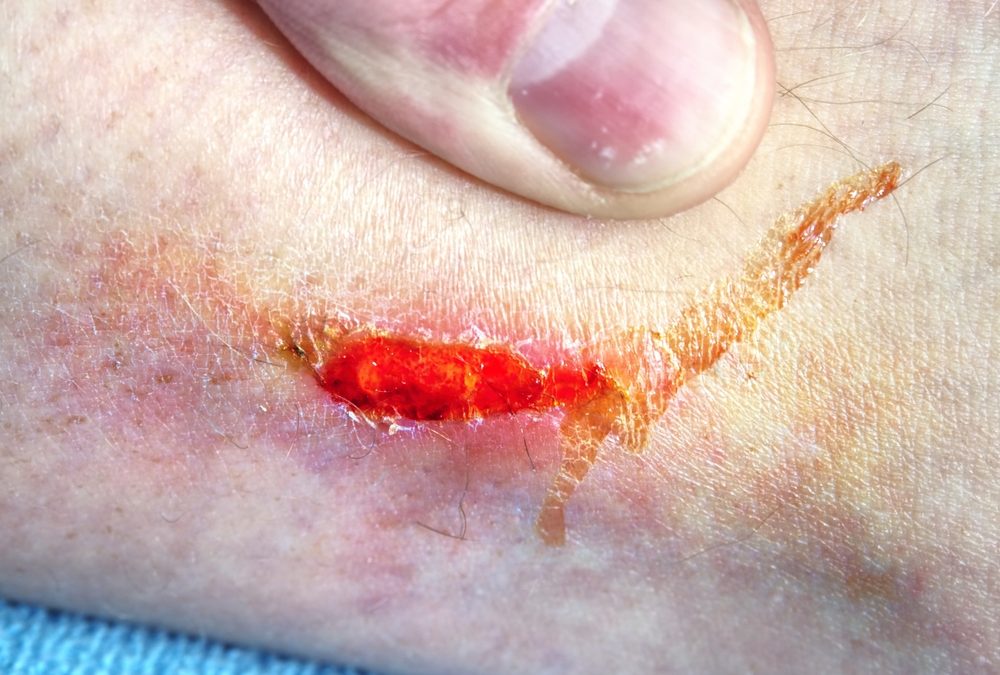A leg ulcer refers to a break in the skin of the leg. Normally, these breaks occur due to injury and heal normally within one to two weeks. Chronic leg ulcers, however, are characterized by breaks in the skin that allow bacteria and air to access the leg’s interior structures. Chronic leg ulcers occur in individuals who have underlying conditions that prevent the wound from healing, causing the ulcer to persist and expand in size.
Are You at Risk of Developing a Leg Ulcer?
Venous disease, responsible for about 80% of cases, is by far the most common underlying condition that causes individuals to develop leg ulcers. Leg veins are responsible for carrying blood from the feet back to the heart. These veins contain valves, which, when working properly, prevent blood from pooling in the legs between each heartbeat. When these valves do not function properly, the veins cannot efficiently pump blood back to the heart from the body’s lower extremities, and the pressure inside the person’s legs increases significantly. Increased vein pressure damages the skin and can lead to the development of a leg ulcer.
In addition to venous disease, arterial disease (15%) and other conditions such as diabetes and rheumatoid arthritis (5%) put individuals at risk of developing leg ulcers. Often, leg ulcer cases develop as a result of more than one health condition.
What Are the Symptoms of a Leg Ulcer?
As they spread and worsen, leg ulcers can become quite painful. The following are symptoms commonly associated with leg ulcers:
- brokenskin that does not heal within a normal amount of time (within one or two weeks)
- swellingat the site of the wound and in the affected leg or both legs
- skinsurrounding the wound can become hardened or discolored
- woundscan emit a foul-smelling discharge, especially when infection is present
Treatment of Venous Disease and Painful Leg Ulcers
Thankfully, leg ulcers can be treated effectively. It is usually recommended that patients take measures to reduce the blood pressure inside their legs by keeping their legs elevated above the heart and wearing compression stockings. Medical treatment is also usually recommended for the wound. This will include various bandages and potentially antibiotics and/or surgery in severe cases.
If you believe you are suffering from a leg ulcer, please make an appointment at once with our team of practitioners at Abella Health.

